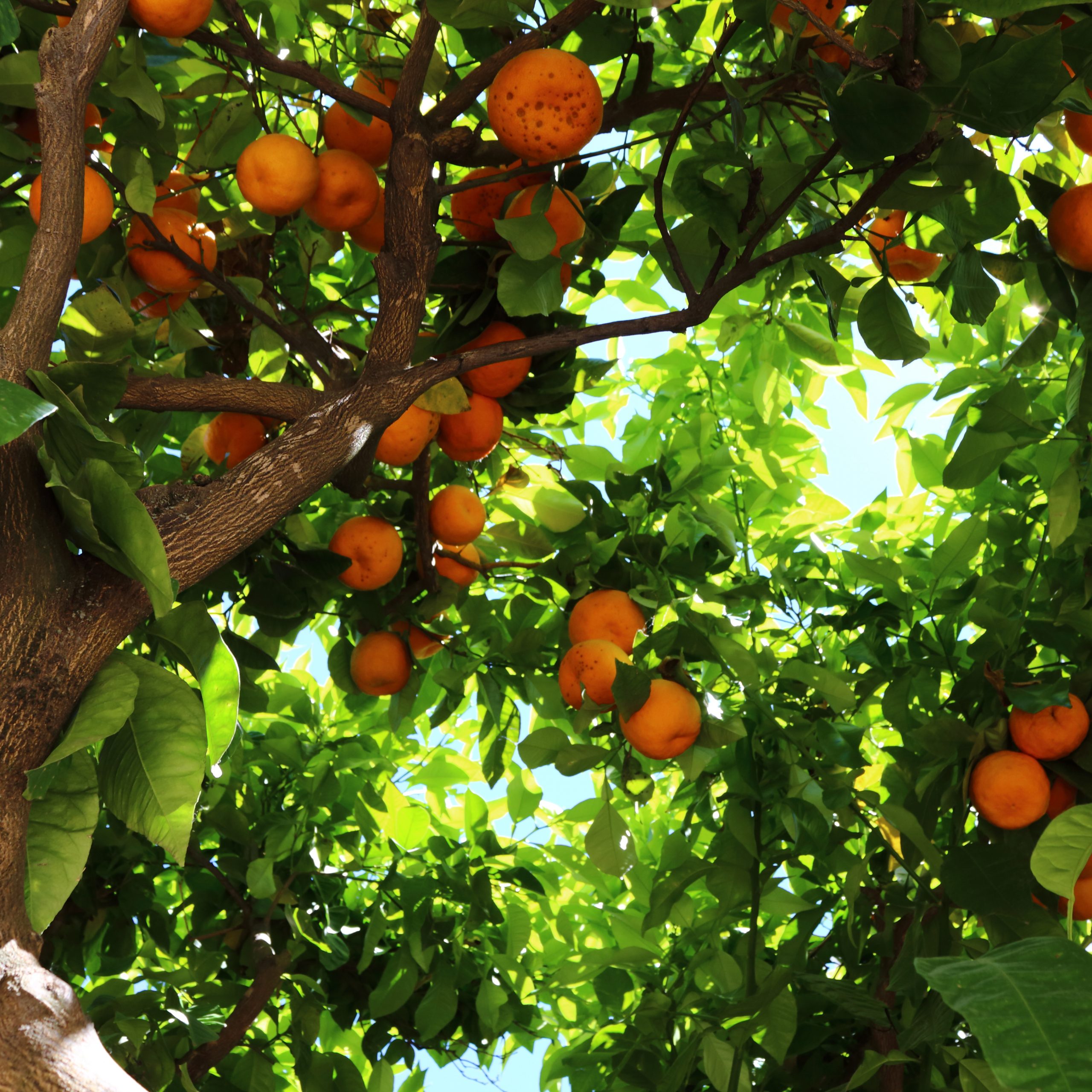Seville orange, bitter orange, sour orange, bigarade orange, or marmalade orange refers to a citrus tree (Citrus aurantium) and its fruit.
It is a hybrid between Citrus maxima (pomelo) and Citrus reticulata (mandarin). Many varieties of bitter orange are used for their essential oil, and are found in perfume, used as a flavoring or as a solvent. The Seville orange variety is used in the production of marmalade.
The citrus x uranium l. Seville orange or bitter orange is native to the south-east of Asia. It was introduced to Spain by the Arabs in the 9th century. However, they were first cultivated from the seed at the end of the 12th century in Seville. This is why they are called Seville orange.
Table of Contents
The root of the word orange
The word orange in Spanish derives from the Sanskrit word (a language from ancient India) for “orange tree” (नारङ्ग nāraṅga), which in turn derives from a Dravidian root word (from நரந்தம் narandam) which refers to the Bitter orange in Tamil — one of the official languages of India, Singapore and Sri Lanka. This Sanskrit word reached European languages through Persian نارنگ( nārang) and its Arabic derivative نارنج (nāranj). For it part, the word “naranja” in Spanish refers to the fruit while “naranjo” means orange tree.
It needs fertile soil with plenty of humus, proper drainage and a sunny location protected from the wind. This species is widely used in Hispano-Islamic gardens for decoration and for practical purposes like hygiene and food. For example, they make tea with the leaves for stomach problems and use the peel to get rid of bad smells (as a natural deodorant).
Seville orange flower
The trees have a beautiful blossom and the flower name is “azahar”. It means white flower in Arabic. Orange blossom water in Spanish is “agua de azahar” and it is used as a perfume and an aroma in many traditional pastries in Granada and in Arabic countries. The peel is an important ingredient in a liquor known as curazao. However, the bitter orange is internationally well-know because it is used to make Seville orange marmalade.
Seville oranges are the result of a cross between a grapefruit and a mandarin, both of which are good sources of vitamin C and fiber. Citrus fruit also contain potassium, phosphorus, vitamin A, and calcium, and have antioxidant and anti-inflammatory properties. Seville oranges contain synephrine, which has been used in some weight loss products.
Orange extra benefits
Consuming the fruit is considered beneficial for the immune system. Oranges stimulates the production of defences, during the cold periods or of changes of temperatures. It is good to drink orange juice to anticipate cold and though it does not avoid the flu, it accelerates our healing.
They have antioxidant properties, is a magnificent anti aging treatment, improves the bloodstream which carries a decrease of the arterial pressure, anticipates the loss of vision and of hearing, and even, has been demonstrated that the vitamin C is good to prevent the cancer.
In addition, it is beneficial to regulate the stomach and intestine function. For example: it helps to relieve the gastric acidity problems.
If you visit Granada with Miriam Tourist Guide, you will discover more details about this fascinating fruit.




Comment (0)